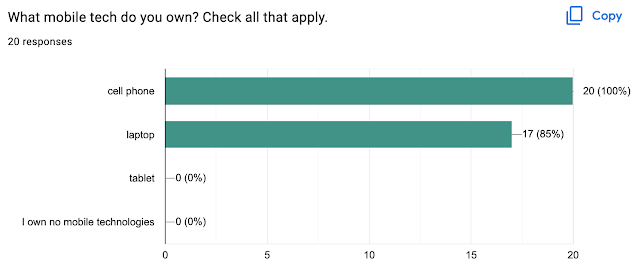Although the sample size remains small at twenty, preliminary results from a social media and student technology survey may provide some insights into trends in the larger student population. The 20 students are students who are in courses at the College of Micronesia-FSM. The survey was anonymous, the course in which the survey was posted includes both a residential and online section.
YouTube garners the most time spent on a platform. While students generally have FaceBook and Instagram accounts, the site that students spend the most time on after YouTube is TikTok - a testament to the almost legendary ability of the TikTok algorithm to addict a user to the platform. Charts such as the one above are why Meta (Facebook, WhatsApp, and Instagram) are so fearful of TikTok.
As an educator engaged in online delivery of learning I am naturally inclined to want to use platforms that connect with students, platforms with which they are familiar.
And there are already
statistics videos on TikTok as seen above. That said, with an ideal TikTok video length of 9 to 15 seconds and limitations on who can upload anything longer, TikTok looks like a challenging platform to use in support of a 16 week course. Playlists, however,
are supported.
Although the sample size is small and there will be a selection effect (one has to have some sort of access to technology to take the survey), students have access to mobile technology.
Data gathered between 2015 and 2018 suggested that anywhere from 20% to 70% of the students had a laptop in any given term, smartphone ownership bounced above and below a roughly 40% average. Today a faculty member can reasonably expect that students have access to some form of mobile technology.
In 1997 when the
math-science computer laboratory began operation all of the students depended completely on college computer laboratories. At that time the laboratory was also the only Internet connected laboratory. The laboratory had work-study students that kept the laboratory open in the evenings to provide student access to computers and the Internet. Today a decreasing number of students remain dependent on college facilities to access the Internet.
Another sea change is the ability of students to access the Internet from home. Again, the sample size is small, but preliminary data suggests that students access the Internet both from home and from the campus. Public access points, available only on Pohnpei as far as I know, are also used by students.










Comments
Post a Comment